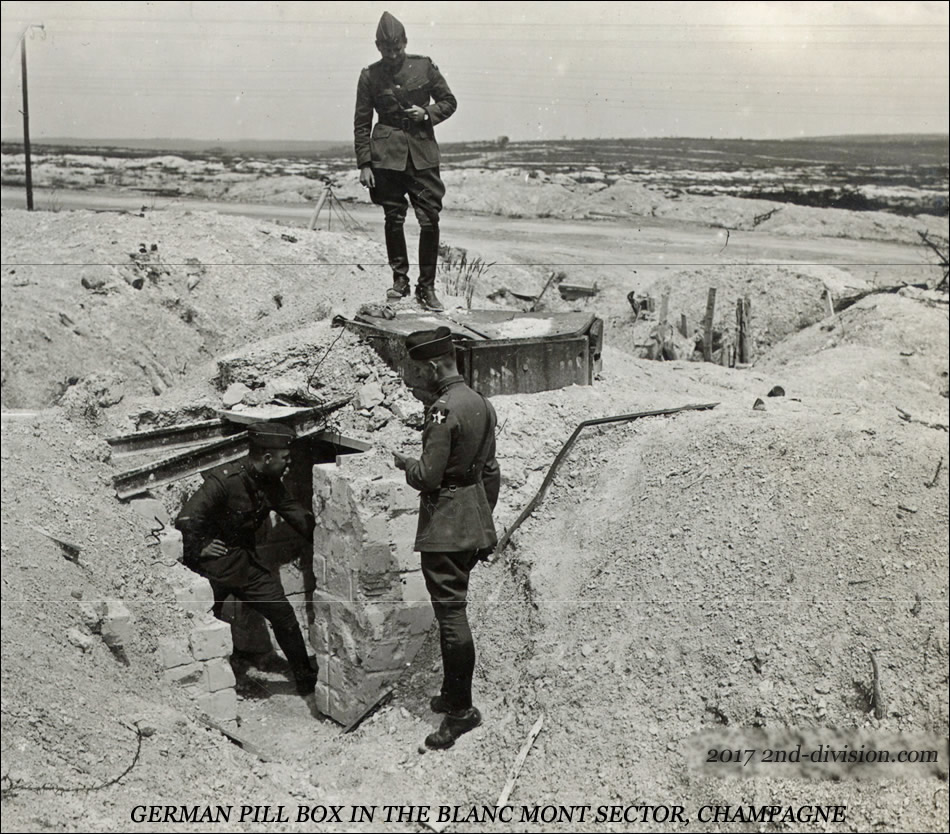
| Home | About |
German Pill Box In The |
|
 |
|
Although one section of the ancient province of Champagne, bordering the valley of the Marne River between Chalons and Epernay, is so fertile that it is clothed with the vast vineyards which produce the most famous wine in the world, "champagne;" by far the greater part of the country is almost as sterile as a desert. During the World War thousands of acres of this land were ruined for generations to come by having the underlying chalk thrown to the surface by the digging of trenches and the explosion of shells. This German machine gun emplacement, or "pill-box," built of steel and concrete, is one of many which helped to make the deeply organized German front between Somme-Py and St. Etienne-a-Arnes, 22 miles east of Reims, the strongest section between that city and the Argonne Forest. Early in October, General Gouraud requested the aid of American troops in capturing Blanc Mont. General Pershing sent the 2nd and the 36th Divisions. In four days of terrific fighting, Oct. 3 to 6, the 2nd Division forced its way through all the prepared German positions, penetrating to a depth of 4 1/2 miles, cleaning up Blanc Mont and capturing St. Etienne. The enemy was thus forced to fall back from Reims, yielding ground which he had held since September, 1914. On Oct. 7 the 2nd was relieved by the 36th, composed of Oklahoma and Texas troops. The division [36th] had never been in action before* but it gave a splendid account of itself, participating vigorously in the pursuit of the enemy to and beyond the Aisne River, a distance of 13 miles. |
|
|
|
| The soldiers in the photograph are 2nd Engineers. |
| Last Update: 01/05/2025 1:21 AM | Web site founded 2002. | ©1917-2025 2nd Division (Regular) A.E.F. |